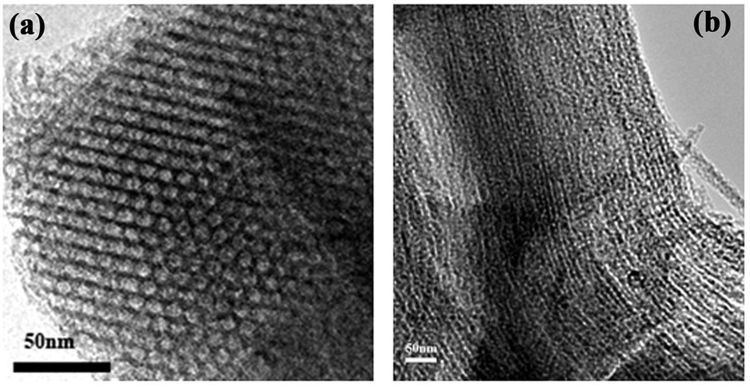 | ||
A mesoporous material is a material containing pores with diameters between 2 and 50 nm.
Porous materials are classified into several kinds by their size. According to IUPAC notation, microporous materials have pore diameters of less than 2 nm and macroporous materials have pore diameters of greater than 50 nm; the mesoporous category thus lies in the middle.
Typical mesoporous materials include some kinds of silica and alumina that have similarly-sized fine mesopores. Mesoporous oxides of niobium, tantalum, titanium, zirconium, cerium and tin have also been reported. According to the IUPAC, a mesoporous material can be disordered or ordered in a mesostructure.
A procedure for producing mesoporous materials (silica) was patented around 1970, and methods based on the Stöber process from 1968 were still in use in 2015. It went almost unnoticed and was reproduced in 1997. Mesoporous silica nanoparticles (MSNs) were independently synthesized in 1990 by researchers in Japan. They were later produced also at Mobil Corporation laboratories and named Mobil Crystalline Materials, or MCM-41.
Since then, research in this field has steadily grown. Notable examples of prospective applications are catalysis, sorption, gas sensing, ion exchange, optics, and photovoltaics.
Mesopores may be defined differently in other contexts. For example, in the context of porous aggregations such as soil, mesopores are defined as cavities with sizes in the range 30 μm–75 μm.
